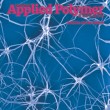Home > Press > Nanofibre morphology control
 |
Abstract:
Rigid aromatic polymers have been shown to give high performance in industrial applications that require demanding operating conditions.
Nanofibre morphology control
Germany | Posted on September 27th, 2012In newly published research, Kunio Kimura and colleagues report that the morphology of poly(p-oxybenzoyl) precipitates formed by the co-polymerisation of 4-acetoxybenzoic acid with trifunctional co-monomers based on 3,5-diacetoxybenzoic acid (DABA) is significantly influenced by the structure of the co-monomer and the solvent. As part of their research the authors varied the co-monomer, solvent, co-polymer ratio, temperature of polymerisation, and concentration. The multitude of conditions gives rise to fibrils, needles, spheres, spheres with needle-like structures on the surface, and nanofibre networks. The article will be highlighted on the cover of the forthcoming special issue on fibres of the Journal of Applied Polymer Science.
Nanofibre networks are widely investigated because of their potential to be used for protective clothing, high performance filters, and as high-strength fillers for polymer composites. Many nanofibre networks are fabricated by electrospinning; however, the nature of rigid-rod polymer structures means they are often not soluble in solvents required for this process. Here the researchers used the alternative method of reaction-induced phase separation during isothermal solution polymerisation. This technique circumvents the problem of insolubility because the morphology is created by the phase-separation of the oligomers.
Of the co-monomers used, only polymerisation with DABA itself produces nanofibre networks. These interconnected structures resemble non-woven fabrics prepared by more conventional methods. Alternative polymerisation conditions instead produce differently shaped precipitates, such as the jellyfish-like aggregates shown below.
The networks are composed of fibrillar crystals connected to each other at nodal points with the poly(p-oxybenzoyl) molecules aligned along the long direction of the crystals. The number of fibres grown from one nodal point, the distance between connected nodal points, the average fibre length and the average number of connected nodal points can all be varied by changing the concentration.
The study provides important insight into nanofibre network formation. This, combined with the excellent thermal stability and the ability to control the structure of the nanofibre networks, should prove valuable for non-woven fabric applications.
####
For more information, please click here
Copyright © Wiley-VCH Materials Science Journals
If you have a comment, please Contact us.Issuers of news releases, not 7th Wave, Inc. or Nanotechnology Now, are solely responsible for the accuracy of the content.
| Related Links |
| Related News Press |
News and information
![]() Researchers develop molecular qubits that communicate at telecom frequencies October 3rd, 2025
Researchers develop molecular qubits that communicate at telecom frequencies October 3rd, 2025
![]() Next-generation quantum communication October 3rd, 2025
Next-generation quantum communication October 3rd, 2025
![]() "Nanoreactor" cage uses visible light for catalytic and ultra-selective cross-cycloadditions October 3rd, 2025
"Nanoreactor" cage uses visible light for catalytic and ultra-selective cross-cycloadditions October 3rd, 2025
Discoveries
![]() Researchers develop molecular qubits that communicate at telecom frequencies October 3rd, 2025
Researchers develop molecular qubits that communicate at telecom frequencies October 3rd, 2025
![]() Next-generation quantum communication October 3rd, 2025
Next-generation quantum communication October 3rd, 2025
![]() "Nanoreactor" cage uses visible light for catalytic and ultra-selective cross-cycloadditions October 3rd, 2025
"Nanoreactor" cage uses visible light for catalytic and ultra-selective cross-cycloadditions October 3rd, 2025
Materials/Metamaterials/Magnetoresistance
![]() First real-time observation of two-dimensional melting process: Researchers at Mainz University unveil new insights into magnetic vortex structures August 8th, 2025
First real-time observation of two-dimensional melting process: Researchers at Mainz University unveil new insights into magnetic vortex structures August 8th, 2025
![]() Researchers unveil a groundbreaking clay-based solution to capture carbon dioxide and combat climate change June 6th, 2025
Researchers unveil a groundbreaking clay-based solution to capture carbon dioxide and combat climate change June 6th, 2025
![]() A 1960s idea inspires NBI researchers to study hitherto inaccessible quantum states June 6th, 2025
A 1960s idea inspires NBI researchers to study hitherto inaccessible quantum states June 6th, 2025
![]() Institute for Nanoscience hosts annual proposal planning meeting May 16th, 2025
Institute for Nanoscience hosts annual proposal planning meeting May 16th, 2025
Announcements
![]() Rice membrane extracts lithium from brines with greater speed, less waste October 3rd, 2025
Rice membrane extracts lithium from brines with greater speed, less waste October 3rd, 2025
![]() Researchers develop molecular qubits that communicate at telecom frequencies October 3rd, 2025
Researchers develop molecular qubits that communicate at telecom frequencies October 3rd, 2025
![]() Next-generation quantum communication October 3rd, 2025
Next-generation quantum communication October 3rd, 2025
![]() "Nanoreactor" cage uses visible light for catalytic and ultra-selective cross-cycloadditions October 3rd, 2025
"Nanoreactor" cage uses visible light for catalytic and ultra-selective cross-cycloadditions October 3rd, 2025
Industrial
![]() Quantum interference in molecule-surface collisions February 28th, 2025
Quantum interference in molecule-surface collisions February 28th, 2025
![]() Boron nitride nanotube fibers get real: Rice lab creates first heat-tolerant, stable fibers from wet-spinning process June 24th, 2022
Boron nitride nanotube fibers get real: Rice lab creates first heat-tolerant, stable fibers from wet-spinning process June 24th, 2022
![]() Nanotubes: a promising solution for advanced rubber cables with 60% less conductive filler June 1st, 2022
Nanotubes: a promising solution for advanced rubber cables with 60% less conductive filler June 1st, 2022
|
|
||
|
|
||
| The latest news from around the world, FREE | ||
|
|
||
|
|
||
| Premium Products | ||
|
|
||
|
Only the news you want to read!
Learn More |
||
|
|
||
|
Full-service, expert consulting
Learn More |
||
|
|
||








